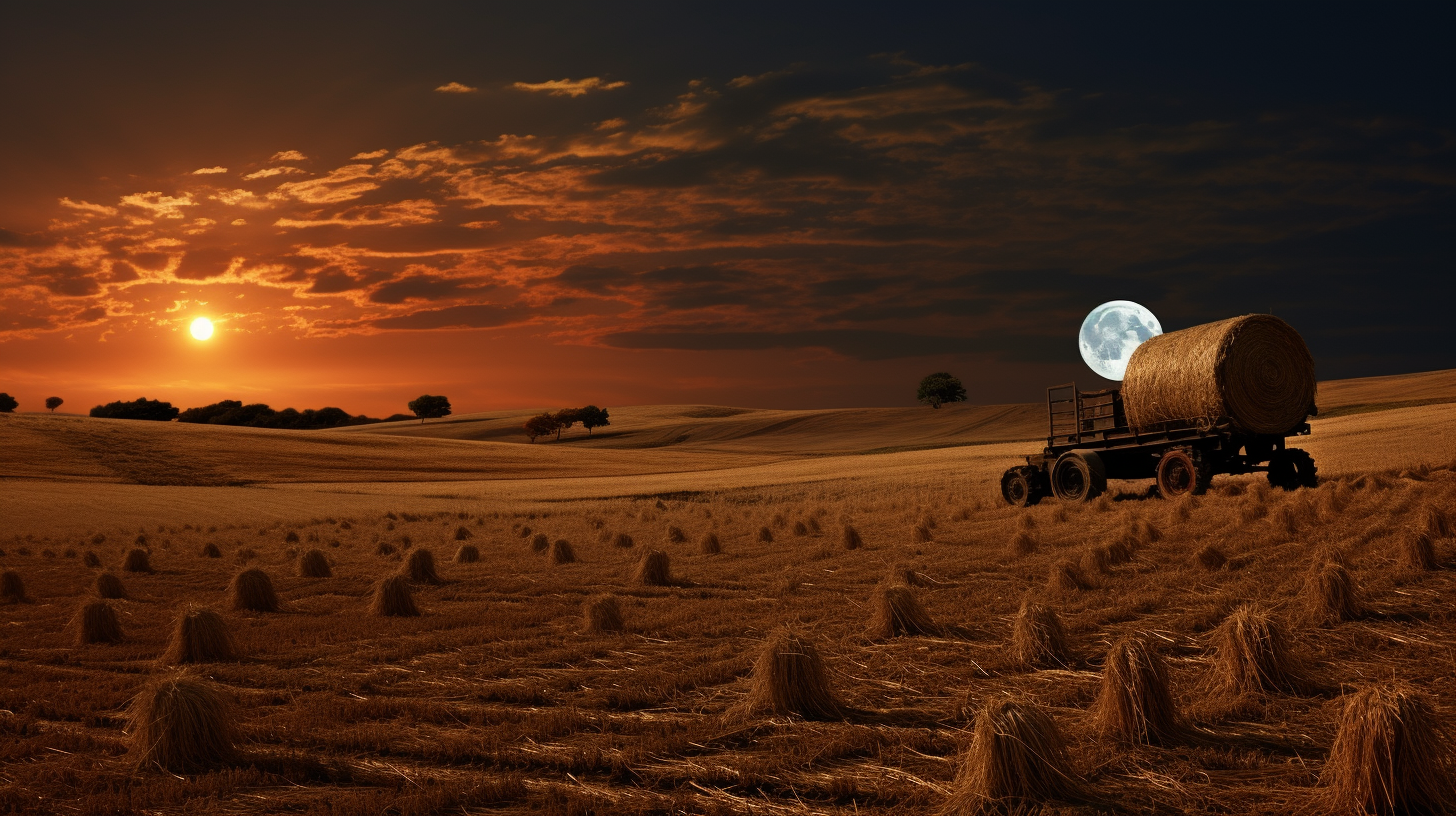As the pallid glow of the Last Harvest Moon casts long shadows over desolate fields that once burgeoned with life, we stand at a crossroads, observing the twilight of traditional agriculture. Gone are the days of idyllic farmscapes, supplanted by the harsh reality of climate chaos and environmental degradation. Each harvest moon now looms as a somber reminder, a bleak beacon in the night sky illuminating the stark finality of our situation.
Observing the barren fields, one may recall a time when monocultural practices and technological marvels promised bounty and security. Yet, against the backdrop of our ravaged Earth, those are but whispers of a bygone era — tales for children who will never sink their hands into fertile soil. Herein lies the crux of a dystopian tale — a world where the roots of agriculture cannot dig deep enough to overcome the poison of our own making.
One could attempt to recount the triumphs of human ingenuity, the genetic modifications and chemical concoctions that once buoyed our yields. But as superweeds overcame our clever tricks and vital waterways dried to a trickle, our resilience seemed as though it would be outdone by reckless ambition. The echoes of Apocalypse Harvest‘s alarm and Dust Bowl Redux‘s parallels cannot be overstated. Here, we delve further, examining the cultural erosion that accompanies our physical landscapes’ decay.
Traditional farming, the symphony of seasonality and harmony with nature, is being replaced by a dissonant silence. Migrations from countryside to megapolitan sprawls fracture the continuity of generational knowledge, transforming the agricultural tapestry into a patchwork of lost lore and vacant stares. The tools of the past hang dormant, a visual requiem for a chapter closing without applause or encore. Culture — like crops — is succumbing to the environmental onslaught.
Interviews with those few farmers clinging to the remnants of tradition often reveal a blend of resilience and resignation. “The final harvest under this moon may well be the last,” they utter, faces etched with the toil of an unrewarding struggle. Hunger is not a specter here — it is a resident, palpable in the silence of destitute markets and children’s eyes too wide to beheld an innocence long starved away.
And what of the future? Proposals for vertical farms and lab-grown sustenance emerge as flickers of innovation, attempting to illuminate a path through the dust and despair. But, as our narrative has persistently noted, such endeavors often ring hollow when juxtaposed with the enormity of our detachment from the natural world. It’s not just about feeding a population; it’s about the essence of what it means to nourish a society, in body and spirit.
In the gloaming light, the Last Harvest Moon serves not as a symbol of hope but as one of reflection. For even as we ponder mechanized marvels and scientific leaps, we must confront the undeniable truth: Traditional agriculture isn’t merely waning — it’s whispering its goodbyes. With each pass of the combine, with every fall of the plow, we edge closer to silencing the lore and lessons that have sustained generations.
The moon will rise again, as it always does, but the fields may not recognize its light. Through the haze of an age of extinction, where once there was life, there may only be echoes and the grim dance of shadows marking the absence of what once was. Yet, let this not be an ode to despair. Instead, let it be the jolt that awakens the collective conscience, stirring within the remnants of hope for a world not yet bereft of all its splendor.
Now, as the moon sets on our ailing Earth, we must question, with a mixture of sorrow and intent: What will rise in the wake of the Last Harvest Moon? Will it be a testament of our failure, or the first chapter of an eleventh-hour redemption?
